‘El Muro/The Wall’ Dance at National Portrait Gallery (photos)
By • May 21, 2022 One Comment 4395
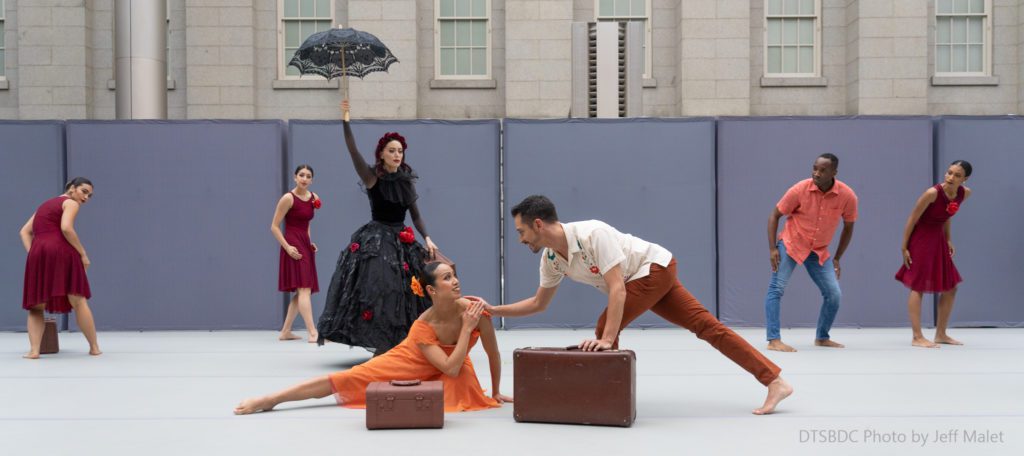
On three successive evenings in mid-May, the Dana Tai Soon Burgess Dance Company (DTSBDC) premiered the latest in collaboration with the Smithsonian National Portrait Gallery in Washington D.C. ‘El Muro’ (“The Wall” in Spanish) is the ninth of the series of works by the company specifically tied to one of the NPG’s exhibitions and was its first live performance at the museum since 2019 due to the pandemic.
The 30 minute work by Dana Tai Soon Burgess, the first choreographer-in-residence at a Smithsonian museum, featured 10 dancers and live music. It was commissioned to coincide with the NPG’s current exhibition “The Outwin 2022: American Portraiture Today” (April 30, 2022 – February 26, 2023) based on its triennial Outwin Boochever Portrait Competition celebrating excellence in the art of portraiture.
‘El Muro’ confronts the topic of immigration, specifically along the Mexico-U.S. border, inspired by “Refugees Crossing The Border Wall into South Texas,” by artist Rigoberto A. Gonzalez currently on exhibit as part of the 2022 Outwin collection. Said Burgess, “The Rigoberto painting is the inspiration for the choreography and connected my feelings of empathy for asylum seekers and the situation at the Southern border.” The painting portrays a family of four clinging to one another as the woman climbs a ladder with a baby in her arms, relating to the experiences people have at the Mexican-American border and the ramifications of physical and psychological walls that separate cultures and families. “I love the Baroque quality of the work which is at once spiritual and emotionally wrought with turmoil from a journey to find safety for the archetype of family. The painting’s tableau has inspired me to work multiple tableau’s and Latin American mythologies into the dance El Muro/The Wall.”
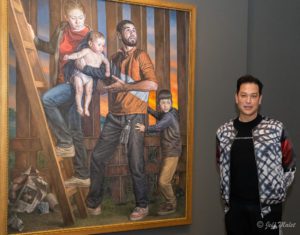
Choreographer Dana Tai Soon Burgess and ‘Refugees Crossing The Border Wall into South Texas,’ by artist Rigoberto A. Gonzalez now hanging at the National Portrait Gallery. Photo by Jeff Malet.
“I grew up in Santa Fe, New Mexico, and our southern border towns are actually less than half an hour away from the wall, our southern border wall” said Burgess in his introductory remarks. “One of the main factors about why I was so attracted to the work is that during this time [of COVID] when we were sort of stuck in our homes and our communities were shut down, I started thinking about how important a place to call home is and to have safety and to have a community upon which we can call…I thought a lot about asylum seekers, about individuals that come to America and seek refuge and look for a new home here. So this work is based on that concept and also in images which have a certain sense of magical reality and a sense of how love and loss and death are represented.”
A 60’x10′ wall in 6 movable sections designed by Kelly Southall commanded a temporary dance floor placed inside the museum’s Kogod Courtyard. It featured the plight of two lovers portrayed by dancers Joan Ayap and Felipe Oyarzun Moltedo about to embark on a journey to a better life together. “Joan unfortunately doesn’t make it across the wall and dies in my mind” says Burgess. “She comes back as a ghost that leads Felipe to break down the wall.”
“When the Portrait Gallery began its choreographer-in-residence program in 2016, a new form of engagement arrived at the Smithsonian,” remarked Kim Sajet, director of the National Portrait Gallery. She first became involved with DTSBDC for an exhibition about dancers, thinking at the time: “This is kind of silly. We’ve got dancers on the walls, but we don’t actually have any movement.” Commenting about museums in general, “we are always in this [static] two-dimensional world….and yet art should be very much about passion and sharing empathy with others”, adding “the curatorial staff will tell you that I gave them brownie points if they make people cry.” “Dana Tai Soon Burgess encouraged the museum’s visitors and staff to think of portraiture as something modern, three-dimensional, multi-sensory and cross-disciplinary.”
Live musical accompaniment was provided by a 4 piece combo led by Peru born Martin Zarzar with additional vocals provided by Cuban-American vocalist Nicolle “Nikki” Guerra. “I wanted to have a celebration to invite community through dance and music after a time of isolation,” said Burgess. “It is truly a joy to be back to live performances, we have missed our audiences and are celebrating being back together. The dancers are thrilled to perform for audiences again.”
DTSBDC was founded in 1992 and is now in its 30th season. “As the Smithsonian’s first choreographer-in-residence at the National Portrait Gallery,” said Burgess, “I have the unique opportunity to be inspired by exhibits.” The company often rehearses in the National Portrait Gallery and its rehearsal process often becomes an integral part of an exhibit. Burgess’ own portrait already has a place in the NPG’s permanent collection. His forthcoming memoirs, Chino and the Dance of the Butterfly, to be published by the University of New Mexico Press, is scheduled for a Sept. 15 release. It is on presale here.
“When we talk about the situation at the Mexico-U.S. border, we must not forget that the crisis originated far away, in many Latin American countries, and even in places as distant as Asia, Africa, or Europe. Hundreds of thousands, if not millions of people, are forced to flee every year as a consequence of escalating conflict, the devastations of COVID-19, and climate change. Works like El Muro/The Wall tell stories that otherwise would remain unknown or could be forgotten. They show us why it is important to protect people’s right to seek asylum so those who have been affected by the worst humanitarian crises can survive, recover, and rebuild their lives.”
DTSBDC will debut an additional new work titled “A Tribute to Maya Lin” October 16, 23 and 30 in response to the museum’s exhibition, “One Life: Maya Lin,” dedicated to the life and work of the Asian American architect, sculptor and environmentalist. The company plans to tour El Muro/The Wall starting in New Mexico in November.
Click on the photo icons below to view a slideshow of Jeff Malet’s photographs on behalf of DTSBDC from the May 17-19, 2022 performances of El Muro/The Wall at the National Portrait Gallery in Washington D.C.
A confluence of traditions from Latin America shapes the music and imagery such as the Mexican Legend of La Llorona, a folklore of a specter that haunts waterways. Adds Burgess: “La Llorona is the weeping woman. It was a tale that allows young people to not go into flash flood ravines in the South West and Latin America. For me the woman in black (portrayed by dancer Christin Arthur) is death, an image that is always present in the life cycle. The marigolds refer to the flowers placed on ofrendas, or Day of the Dead altars. These flowers assist the spirits of loved ones in finding their way home. The umbrellas are associated with images of ghosts and funeral goers. For me, the work transforms the Kogod Courtyard into a moving painting that shows how art can break down the barriers separating humanity.”
- ‘Refugees Crossing The Border Wall into South Texas,’ by artist Rigoberto A. Gonzalez currently on exhibit as part of the 2022 Outwin collection..
- El Muro featured the plight of two lovers portrayed by dancers Joan Ayap and Felipe Oyarzun Moltedo about to embark on a journey to a better life together. DTSBDC Photo by Jeff Malet..
- El Muro featured the plight of two lovers portrayed by dancers Joan Ayap and Felipe Oyarzun Moltedo about to embark on a journey to a better life together. DTSBDC Photo by Jeff Malet.
- Foreground: Joan Ayap, Felipe Oyarzun Moltedo and Christin Arthur. DTSBDC Photo by Jeff Malet.
- A 60’x10′ wall in 6 movable sections designed by Kelly Southall commanded a temporary dance floor placed inside the museum’s Kogod Courtyard. DTSBDC Photo by Jeff Malet.
- El Muro featured the plight of two lovers portrayed by dancers Joan Ayap and Felipe Oyarzun Moltedo about to embark on a journey to a better life together. DTSBDC Photo by Jeff Malet.
- The marigolds refer to the flowers placed on ofrendas, or Day of the Dead altars. These flowers assist the spirits of loved ones in finding their way home.. DTSBDC Photo by Jeff Malet.
- Inside the Kogod Courtyard of the National Portrait Gallery in Washington D.C. DTSBDC Photo by Jeff Malet.
- Live musical accompaniment was provided by a 4 piece combo led by Peru born Martin Zarzar with additional vocals provided by Cuban-American vocalist Nicolle “Nikki” Guerra. DTSBDC Photo by Jeff Malet.
- Valerie Peña, Adolfo Matto Traverso, Aaron Mancus, Jaya Bond, Christin Arthur, Felipe Oyarzun Moltedo, Joan Ayap, Aleny Serna, Sidney Hampton, Christine Doyle. DTSBDC Photo by Jeff Malet.
- Joan Ayap and Felipe Felipe Oyarzun Moltedo. DTSBDC Photo by Jeff Malet.
- Aleny Serna, Jaya Bond, Felipe Oyarzun Moltedo, Christin Arthur, Sidney Hampton, Joan Ayap, Valerie Peña, Adolfo Matto Traverso, Christine Doyle. DTSBDC Photo by Jeff Malet.
- “Joan unfortunately doesn’t make it across the wall and dies.” DTSBDC Photo by Jeff Malet.
- “Joan unfortunately doesn’t make it across the wall and dies.” DTSBDC Photo by Jeff Malet.
- “Joan unfortunately doesn’t make it across the wall and dies.” DTSBDC Photo by Jeff Malet.
- Aleny Serna, Jaya Bond, Felipe Oyarzun Moltedo, Christin Arthur, Valerie Peña, Christine Doyle. DTSBDC Photo by Jeff Malet.
- Valerie Peña, Jaya Bond, Joan Ayap, Aleny Serna, Christine Doyle. DTSBDC Photo by Jeff Malet.
- Valerie Peña, Jaya Bond, Joan Ayap, Aleny Serna, Christine Doyle. DTSBDC Photo by Jeff Malet.
- Inside the Kogod Courtyard of the National Portrait Gallery in Washington D.C. DTSBDC Photo by Jeff Malet.
- Sidney Hampton, Adolfo Matto Traverso, Aaron Mancus. DTSBDC Photo by Jeff Malet.
- “For me the woman in black (portrayed by dancer Christin Arthur) is death, an image that is always present in the life cycle”. DTSBDC Photo by Jeff Malet.
- Joan Ayap and Felipe Felipe Oyarzun Moltedo. DTSBDC Photo by Jeff Malet.
- Valerie Peña, Jaya Bond, Christin Arthur, Felipe Oyarzun Moltedo, Joan Ayap, Aleny Serna, Christine Doyle. DTSBDC Photo by Jeff Malet.
- The umbrellas are associated with images of ghosts and funeral goers.. Valerie Peña, Jaya Bond, Christin Arthur, Felipe Oyarzun Moltedo, Aleny Serna, Christine Doyle. DTSBDC Photo by Jeff Malet.
- The umbrellas arThe umbrellas are associated with images of ghosts and funeral goers.. Christin Arthur, Joan Ayap, Jaya Bond, Christine Doyle. DTSBDC Photo by Jeff Malet.
- Joan Ayap, Felipe Felipe Oyarzun Moltedo and Christin Arthur. DTSBDC Photo by Jeff Malet.
- Sidney Hampton, Joan Ayap, Aleny Serna, Christine Doyle, Adolfo Matto Traverso DTSBDC Photo by Jeff Malet.
- Sidney Hampton, Joan Ayap, Aleny Serna, Christine Doyle, Adolfo Matto Traverso DTSBDC Photo by Jeff Malet.
- Aleny Serna. DTSBDC Photo by Jeff Malet.
- “Joan unfortunately doesn’t make it across the wall and dies in my mind” says Burgess. “She comes back as a ghost that leads Felipe to break down the wall.” – Dancers Joan Ayap and Felipe Felipe Oyarzun Moltedo.. DTSBDC Photo by Jeff Malet.
- Christine Doyle. DTSBDC Photo by Jeff Malet.
- The woman in black (portrayed by dancer Christin Arthur) is death, an image that is always present in the life cycle. DTSBDC Photo by Jeff Malet.
- Joan Ayap, Aleny Serna, Christin Arthur, Sidney Hampton, Aaron Mancus. DTSBDC Photo by Jeff Malet.
- “I wanted to have a celebration to invite community through dance and music after a time of isolation,” said Burgess. DTSBDC Photo by Jeff Malet.
- (l to r) Valerie Peña, Adolfo Matto Traverso, Aaron Mancus, Jaya Bond, Christin Arthur, Felipe Oyarzun Moltedo, Joan Ayap, Aleny Serna, Sidney Hampton, Christine Doyle. DTSBDC Photo by Jeff Malet.
- Choreographer Dana Tai Soon Burgess and ‘Refugees Crossing The Border Wall into South Texas,’ by artist Rigoberto A. Gonzalez. DTSBDC Photo by Jeff Malet.
- Musicians Essiet Okon Essiet, Sylvia Cuenca, Martin Zarzar, Dave Eggar, Nicolle “Nikki” Guerra, rehearsal director Anne Sidney and choreographer Dana Tai Soon Burgess. DTSBDC Photo by Jeff Malet.
- (l to r) Aleny Serna, Jaya Bond, Felipe Oyarzun Moltedo, Christin Arthur, Dana Tai Soon Burgess, Sidney Hampton, Joan Ayap, Valerie Peña, Adolfo Matto Traverso, Christine Doyle. DTSBDC Photo by Jeff Malet.
- Set designer and rehearsal director Kelly Southall and dancer Joan Ayap.. DTSBDC Photo by Jeff Malet.
- (l to r) Felipe Oyarzun Moltedo, Jaya Bond, Nicolle “Nikki” Guerra, Kim Sajet, Sidney Hampton, Joan Ayap. DTSBDC Photo by Jeff Malet.

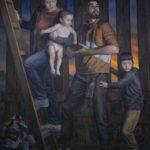

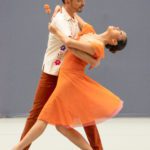
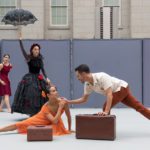
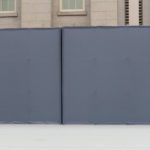
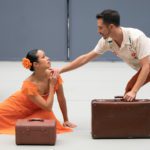
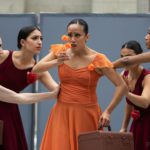
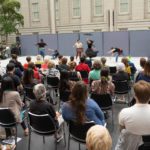
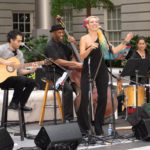
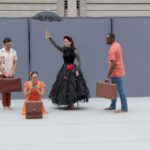
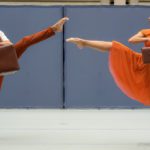

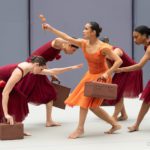
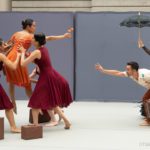
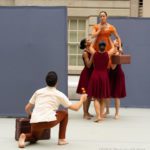
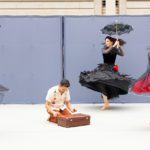
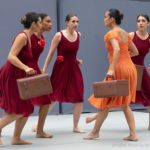
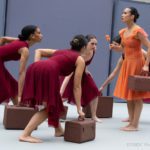
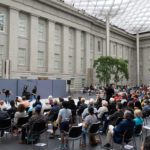
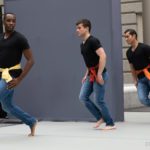
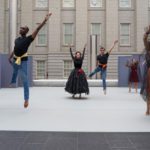
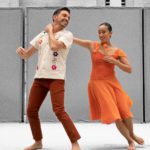
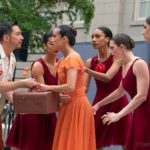
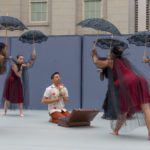
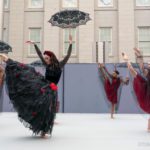
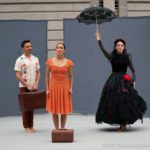
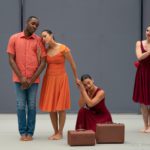
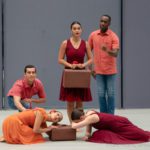
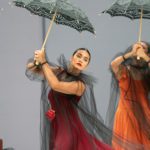

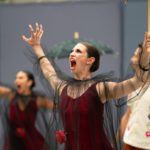
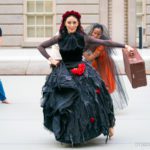
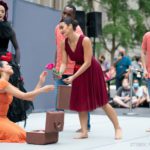
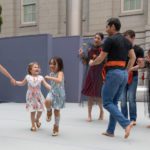
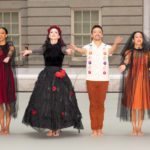






Wonderful writeup and photos of a very special performance.